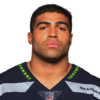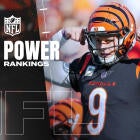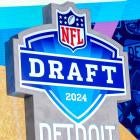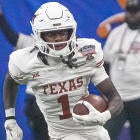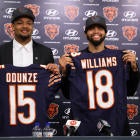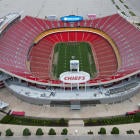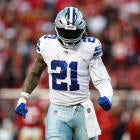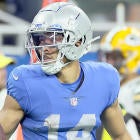Much ado about nothing is an accurate description of the NFL trading deadline. This year's trading period ends Nov. 1 at 4 p.m. EST.
Typically only a couple of trades are made as the deadline approaches. Most of the moves aren't blockbuster deals. They are more like Tuesday's trade in which the Lions received a 2017 sixth-round pick from the Patriots for linebacker Kyle Van Noy and a 2017 seventh-round pick.
The Vikings made a bold move as the regular season approached when quarterback Teddy Bridgewater suffered a devastating knee injury. Sam Bradford was acquired from the Eagles for a 2017 first-round pick and a 2018 fourth-round pick that can elevate to a third- or second-round pick under certain conditions.
Part of the reason trades are few and far between, especially big ones, is that losing NFL teams are sometimes in denial about their chances of turning the season around. They often seem more concerned about creating the perception to fans that they are giving up on the season. Contending teams also are reluctant to give up anything significant for a player that could be a short-term rental because draft picks are one of the most precious commodities in the NFL.
The salary cap matters as well. Trades will be harder for the most cap- strapped teams like the Vikings, Los Angeles Rams and San Diego Chargers, because cash or cap room can't be included in these transactions under NFL rules. The way around it, which was done when the Jacksonville Jaguars traded Eugene Monroe to the Baltimore Ravens in 2013, is for the team and player to restructure the contract before the trade by converting salary into signing bonus. It operates essentially the same way as including cash or cap room because the acquiring team's cap hit for the player in the current league year is reduced. Eating salary in this manner could be a way to increase the draft pick compensation received for a player.
Here are several mostly bold trading deadline moves that NFL teams should consider if more took an approach like the Vikings -- and went all in. A team acquiring a player will only be responsible for 9/17th of his 2016 base salary and any other applicable salary components in his contract.
One trade that doesn't make sense at this time is the Cowboys moving Tony Romo. If he doesn't reclaim his starting job from Dak Prescott, he will be the ultimate quarterback insurance policy with an injury to the rookie sensation -- or if Prescott struggles.
Potential landing spot: Seattle Seahawks
Trade compensation: 2017 second-round pick and conditional 2018 fourth-round pick; Seahawks also get a 2017 fifth-round pick (via New England Patriots-Barkevious Mingo trade)
Thomas was almost dealt to the Denver Broncos at last season's trading deadline. Talks broke down over additional compensation besides Denver's 2016 first-round pick. Despite Hue Jackson's insistence that Thomas isn't available, moving the nine-time Pro Bowl left tackle makes sense since the Browns are undertaking a rebuilding effort that likely won't result in a quick turnaround.
The Browns have a legitimate shot at going 0-16 this season. Cleveland is also expected to have 13 selections in the 2017 draft, including expected compensatory picks. Acquiring additional picks for Thomas would seem to fit with Cleveland's new analytics-driven approach.
Seattle should be desperately looking to upgrade an offensive line which was recently ranked as the NFL's worst by Pro Football Focus. This was before losing underwhelming left tackle Bradley Sowell for several weeks to a right knee sprain.
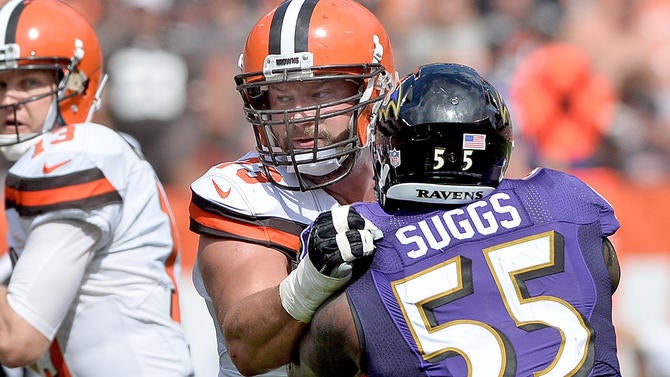
Thomas is a good value with $10 million salaries in 2017 and 2018, the last two years of his contract, although he turns 32 in December. He isn't showing signs of slowing down as he has been a first-team All-Pro in six of the past seven seasons.
Fitting the remaining $4,394,118 remaining balance of Thomas' $8.3 million base salary for 2016 is an issue since the Seahawks have $3.79 million of salary cap room. Cleveland converting some portion of Thomas' salary into signing bonus before the trade might be necessary.
Seattle would be getting back the 2017 fifth-round pick forfeited for violating the NFL collective bargaining agreement's rules against excessive contact during offseason workouts. The 2018 fourth-round pick the Browns would be getting increases to a third-round pick with the Seahawks winning either Super Bowl LI or Super Bowl LII.
Potential landing spot: Indianapolis Colts
Trade compensation: 2017 first-round pick
The Indianapolis defense ranked near the bottom in most conventional statistics last season. Nothing has changed. The Colts rank 28th in both points allowed and total defense this year. Richardson, who has well-documented off-the-field problems, would instantly become Indianapolis' best defensive player.
Giving up a first-round pick to obtain a proven defensive performer shouldn't faze the Colts given general manager Ryan Grigson's overall track record with first-round picks has left a lot to be desired since selecting quarterback Andrew Luck first overall in 2012. Bjoern Werner, the Colts' 2013 first-round pick, never developed as a pass rusher at outside linebacker before being released during the offseason. Running back Trent Richardson, who was acquired in a trade with Cleveland for the 2014 first-round pick, was a big disappointment in his almost two seasons with the team. Phillip Dorsett didn't address an immediate need in 2015 since wide receiver was one of the Colts' deepest positions. He has yet to make a significant impact.
Richardson's long-term prospects with the Jets took a hit when his defensive linemate Muhammad Wilkerson signed a five-year, $86 million contract with $53.5 million in overall guarantees over the summer. The 2013 Defensive Rookie of the Year probably views the deal as his salary floor since he has more upside than Wilkerson. Having two high-priced defensive ends is doable since the Jets don't have a high-priced quarterback. It wouldn't necessarily be the best allocation of resources since defensive end Leonard Williams, the sixth overall pick in this year's draft, appears to be a star in the making.
Moving Richardson would help the 2-5 Jets solve their 2017 salary cap issues by removing his $8.069 million fifth-year option salary from the books. The Jets currently have the second-most 2017 cap commitments at $170.2 million with 50 players under contract and hardly any cap room to carry over from this season.
Potential landing spot: Carolina Panthers
Trade compensation: 2017 second-round pick
Carolina is suffering from the hangover that sometimes afflicts teams following a Super Bowl loss. Making the playoffs is a rarity with five losses in the first six games but the Atlanta Falcons are opening the door by dropping two straight games after a 4-1 start. An in-season turnaround is familiar territory to the Panthers. Two years ago, Carolina won the NFC South after having a 3-8-1 record three-quarters of the way through the season.
Getting Haden would give general manager Dave Gettleman a chance to rectify the mistake he made in rescinding Josh Norman's $13.952 million franchise tender instead of letting the All-Pro cornerback play the season under the tag. Pass coverage has been an Achilles heel for Carolina this season.
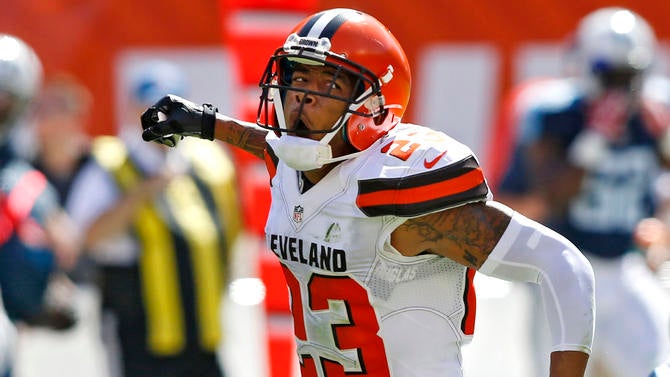
Haden, a two-time Pro Bowl selection, is under contract through 2019 at numbers more in line with what Gettleman was reportedly comfortable paying Norman. The last three years of Haden's contract are worth $32.9 million. Carolina can easily absorb the $5,347,059 Haden is owed for the rest of this season because the team has $14.37 million of cap space. Giving up Haden would give the rebuilding Browns five picks in the first two rounds of next year's draft.
Potential landing spot: Minnesota Vikings
Trade compensation: 2017 second-round pick and 2018 fifth-round pick
The Vikings went all in on this season by trading for Bradford. A strong defense is only going to take Minnesota so far unless the offensive line woes are fixed. T.J. Clemmings, Jake Long -- who was recently signed off the street -- and Jeremiah Sirles aren't the answer to season-ending injuries suffered by starting tackles Matt Kalil and Andre Smith.
Staley would address a short-term and long-term need at left tackle. Kalil is in a contract year while the five-time Pro Bowl selection's contract expires after the 2019 season. He is scheduled to make $19.95 million from 2017 through 2019.
Staley is the type of player the 49ers, who are in contention for the first overall pick in the 2017 draft, should be looking to unload. He's an older player (32 years old) still playing at a high level with a fairly significant contract.
An obstacle to overcome is Minnesota having only approximately $615,000 of cap room. Since San Francisco has a little more than $39 million of cap space, leaving Minnesota with just nine weeks of Staley's minimum salary to cover, which is $468,529, would be necessary. San Francisco would be converting $2,671,545 of Staley's remaining 2016 salary (base salary and per-game roster bonuses) into signing bonus as a part of the deal. Without the need for San Francisco to eat salary, the trade compensation would have been less.
Potential landing spot: Buffalo Bills
Trade compensation: 2017 third-round pick and 2017 sixth-round pick
Buffalo had a pedestrian wide receiving corps before Sammy Watkins' persistent foot problems landed him on injured reserve. There's no guarantee that Watkins will return late in the season when he's eligible to come off IR. Jeffery would give quarterback Tyrod Taylor a much-needed legitimate weapon in the passing game.
The Bears should be receptive to dealing Jeffery because of signability. The franchise player was reportedly looking for a long-term deal putting him near the top of the wide receiver market (minimum of $14 million per year and $40 million of guarantees). The Bears using a second franchise tag on him in 2017 would be $17,518,800, which is 120 percent of his current $14.599 million franchise number.

The Bills aren't in a position to absorb to Jeffery's $7,728,882 salary for the rest of the season without restructuring multiple contracts because the team has slightly over $4.15 million in cap space. Jerry Hughes and LeSean McCoy would be logical candidates.
An easier way, provided it's permissible because of Jeffery's franchise player status, is for Chicago to convert a significant portion of his salary to signing bonus before the trade so Buffalo is only responsible for paying him $1 million to $2 million for the remainder of the season. The potential problem is franchise players are prohibited from signing long-term deals after July 15 until the regular season ends on this upcoming Jan. 1. A couple of NFL team executives I spoke to weren't sure whether this prohibition would extend to a pre-trade salary conversion with a franchise player.
At 4-3, the Bills are in a good position to make the playoffs. A threat of a potential front office and coaching staff housecleaning with a collapse might be the impetus to contemplate a move that doesn't take a longer-range view.
Trade Compensation: Player swap
General manager Howie Roseman has been extremely aggressive in using trades to reshape Philadelphia's roster ever since returning to power as last season was coming to a close. Smith's strength as a deep threat is being wasted in Chip Kelly's offense. He would add a dimension to an offense that lacks firepower in the passing game.
Kendricks has fallen out of favor under new defensive coordinator Jim Schwartz. He has only been on 32 percent of Philadelphia's defensive snaps despite playing in every game this year. Preseason addition Stephen Tulloch would likely play a bigger role with Kendricks' departure.
Kendricks is in the first new year of a four-year, $29 million contract extension he received last August while Chip Kelly was still in charge. Smith is in the second year of a five-year, $40 million deal he signed as an unrestricted free agent in 2014. He makes $8 million in each of the final three years of the deal.
Darren McFadden, RB, Dallas Cowboys
Potential landing spot: Detroit Lions
Trade compensation: 2017 conditional sixth-round pick
McFadden is eligible to come off the non-football injury list he has been on since the start of the regular season because of an offseason mishap that damaged his elbow. He recently declared himself healthy.
McFadden is a luxury for the Cowboys because Ezekiel Elliott, the No. 4 overall pick in the last draft, is leading the NFL in rushing. Alfred Morris has done a nice job relieving Elliott.
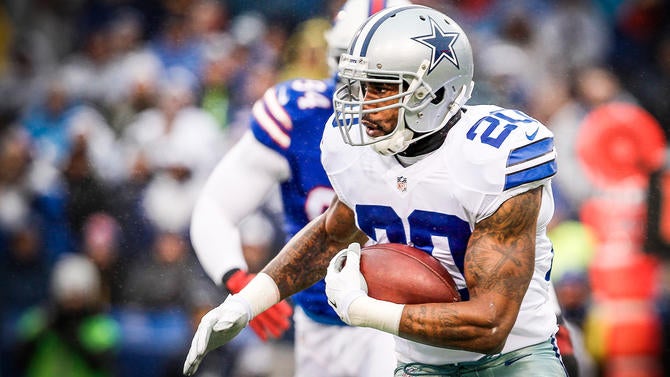
Detroit's lead running back, Ameer Abdullah, is out for season with a foot injury. Theo Riddick, the NFL's best third-down back, is dealing with an ankle problem. McFadden, who was fourth in the NFL last year with 1,089 rushing yards, would give Detroit another option to pair with recent Baltimore Ravens castoff Justin Forsett. Producing at a pace after the trade that would result in 1,000 rushing yards over a full 16-game season would elevate the Cowboys' pick to the fifth round.
Potential landing spot: Green Bay Packers
Trade compensation: 2017 sixth-round pick
General manager Ted Thompson is reluctant to give up draft picks because the Packers are built primarily through the draft. His depleted secondary may necessitate it. Cornerback Sam Shields has been out since the season opener because of a concussion and is on IR. Damarious Randall is also out several weeks after undergoing groin surgery.
The 2014 first-round pick hasn't been able to crack the lineup in Cincinnati. He's currently the Bengals' fourth cornerback. He would probably be further down the depth chart if 2016 first-round pick William Jackson hadn't torn a pectoral muscle in the preseason. There's a chance Jackson could come off IR later in the season.
The Packers would be getting essentially half a season to determine whether it is worth exercising the 2018 fifth-year option for Dennard by next May's deadline. Cincinnati receiving a sixth-round pick is consistent with the compensation the Browns received from the Steelers for Justin Gilbert, the first cornerback taken in the 2014 draft.
Potential landing spot: Dallas Cowboys
Trade compensation: 2017 sixth round pick
The Dolphins have cornered the market on older passer rushers with Mario Williams and Cameron Wake. Wake is coming off an Achilles tear that cost him the final nine games last season. He is beginning to cut into Williams' playing time after starting the season as a situational pass rusher.
Dallas looks like a team that could have a deep playoff run. Putting pressure on opposing quarterbacks is still an issue despite ranking 10th in total defense and eighth in scoring defense. Dallas has Pro Football Focus' second-worst pass rush grade this season.
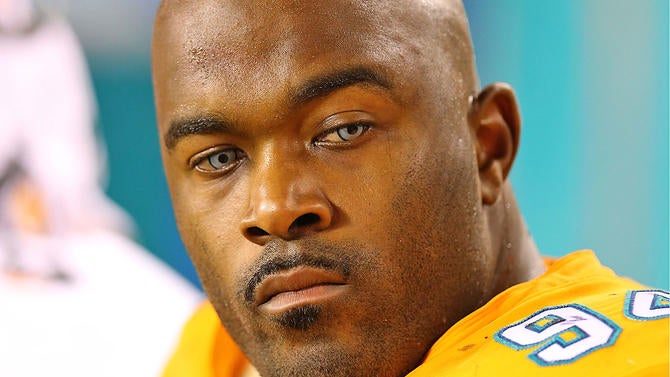
Williams isn't the same player that garnered a six-year, $96 million contract from the Bills in 2012 but he would be an upgrade for the Cowboys. A sixth-round pick is the same as the Bears received last season from the Panthers in a trade for Jared Allen.
Potential landing spot: Houston Texans
Trade compensation: 2017 seventh-round pick
The Texans lost longtime starting right tackle Derek Newton on Monday night against the Broncos. Newton tore the patellar tendons in both knees. Chris Clark is expected to replace him.
Henderson recently returned from a four-game suspension for violating the NFL's substance abuse policy and has been battling Crohn's disease. He has lost the starting job he has held for much of the last two seasons to Jordan Mills. Henderson is also behind Cyrus Kouandjio on the depth chart. The 2014 seventh-round pick should have more upside than Clark since he is six and half years younger. His rookie contract expires after the 2017 season.

















